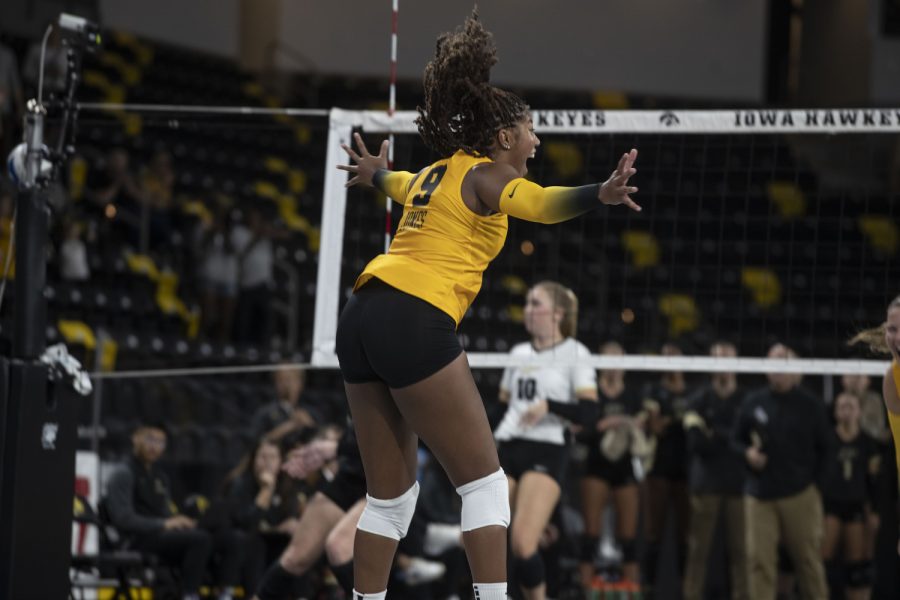EAST LANSING, MICH. — Le’Veon Bell averaged 4.5 yards per rush attempt prior to facing the Hawkeyes on Oct. 13. The running back was used to nabbing numerous long runs, wriggling out from defenders — or jumping over them — and making his way down the field with ease.
But the Iowa defense held the tailback, who ranked second in the Big Ten in rushing yards entering the game, to only two runs of more than 10 yards.
Bell ran for 14 yards to score a touchdown on Michigan State’s opening drive, and the powerful back also rushed for 27 yards late in the third quarter. But 75 percent of the Spartan’s runs were for five yards or fewer, in which he averaged only 3.6 yards per attempt.
It may not seem like a lot that the Hawkeyes were able to knock almost a yard off of Bell’s average, but the defensive line’s ability to chip away at the Spartans’ inside run game proved crucial to the Iowa victory.
“When things are that close, everything counts, and everybody can look at places where it’s an inch here, an inch there, it’s a break here, a break there,” Michigan State quarterback Andrew Maxwell said. “It just shows that football is a game of inches.”
It wasn’t easy for the linemen to tackle Bell. The 6-2, 244 pound running back has strong legs and can run steadily through the line. It regularly took numerous Hawkeyes — two, three, four, five linemen —to bring Bell down.
Iowa middle linebacker James Morris grabbed Bell by the shoulders, swung his feet off the ground, and drove Bell straight into the ground.
Morris said his line had to “gang tackle” Bell to stop the inside run. The linemen and defensive tackles had to return to fundamentals — hitting the target square, correct positioning, accurate footwork, and focus.
“He’s deceptively strong,” Morris said about Bell. “When you run into him — some guys kind of give a little, but he doesn’t. That’s why he’s tough to tackle.”
Morris said the defensive line prepared for Bell with the mindset that it was going to take numerous Hawkeyes to bring him down every time. Iowa’s preparation played a key role in being able to stop the inside run.
“[Bell is] a very good back. He’s going to get his yards, and he’s going to make plays. And he did,” Morris said. “It’s just about us … understanding what he can do. We just have to come every time, and if we’re consistent we have a chance to get him.”
Head coach Kirk Ferentz praised his defense for its perseverance and credited it with a large portion of the victory. The Spartans managed a touchdown in the game’s opening, but the Hawks then held the Spartans to only 3 more points in regulation.
And then the Iowa defense literally won the game for the Hawkeyes: Cornerback Greg Castillo made a decisive interception to end the game in the second overtime. But even before Castillo caught the ball, defensive tackle Louis Trinca-Pasat grazed it at the line of scrimmage.
And if it weren’t for the defense’s ability to slow down Michigan State’s ground attack, there wouldn’t have been overtime at all.
“To win on the turnover there at the end … outstanding and probably appropriate … to have an unsung guy,” Ferentz said. “[Trinca-Pasat] was really the trigger guy, really triggered this all, to get his hand on the ball. It’s kind of fitting in a way.”






